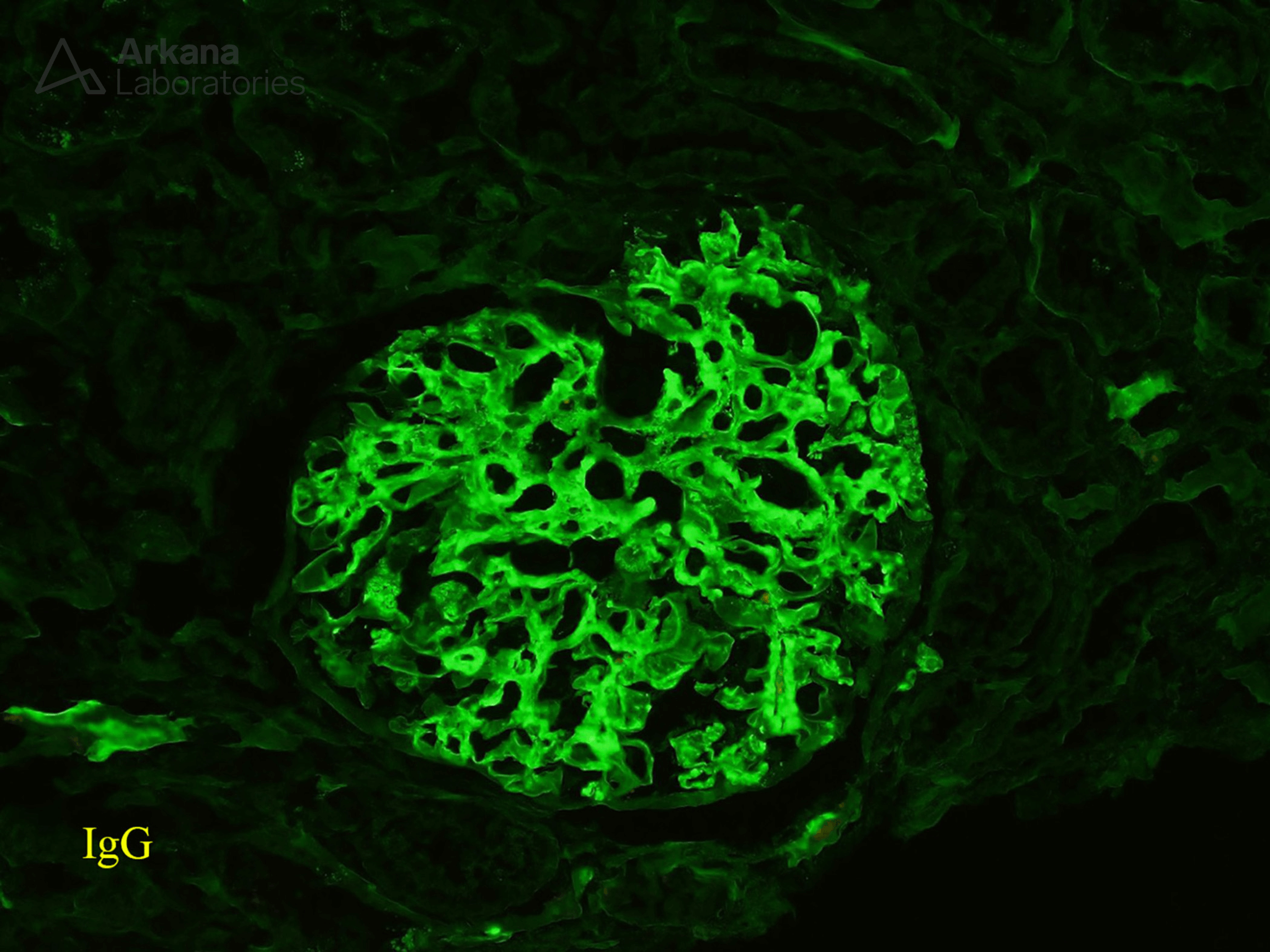What is your leading diagnosis when seeing this particular IgG staining pattern?

Answer: Fibrillary Glomerulopathy
The immunofluorescence shows a glomerulus with a characteristic “smudgy” pattern of staining with IgG within the mesangium with segmental extension into the capillary loops characteristic of Fibrillary Glomerulopathy. Fibrillary GN is an extremely rare disease, seen in <1% of native kidney biopsies and is caused by the deposition of fibrillar deposits which are characterized as non-branching, randomly arranged, and have an average diameter of approximately 20 nm (range: 10-30 nm).
In addition to identifying fibrils by electron microscopy, an immunohistochemical stain DNAJB9, is typically positive as it shows a 98% sensitivity and greater than 99% specificity in these cases. Approximately 40-50% of all patients will progress to ESRD within four years and the disease carries a high recurrence rate within renal allografts (up to 50%). Approximately 17% of patients with Fibrillary GN had a concomitant positive SPEP/UPEP, necessitating the need to further rule out a dysproteinemia in these patients.
Quick note: This post is to be used for informational purposes only and does not constitute medical or health advice. Each person should consult their own doctor with respect to matters referenced. Arkana Laboratories assumes no liability for actions taken in reliance upon the information contained herein.
